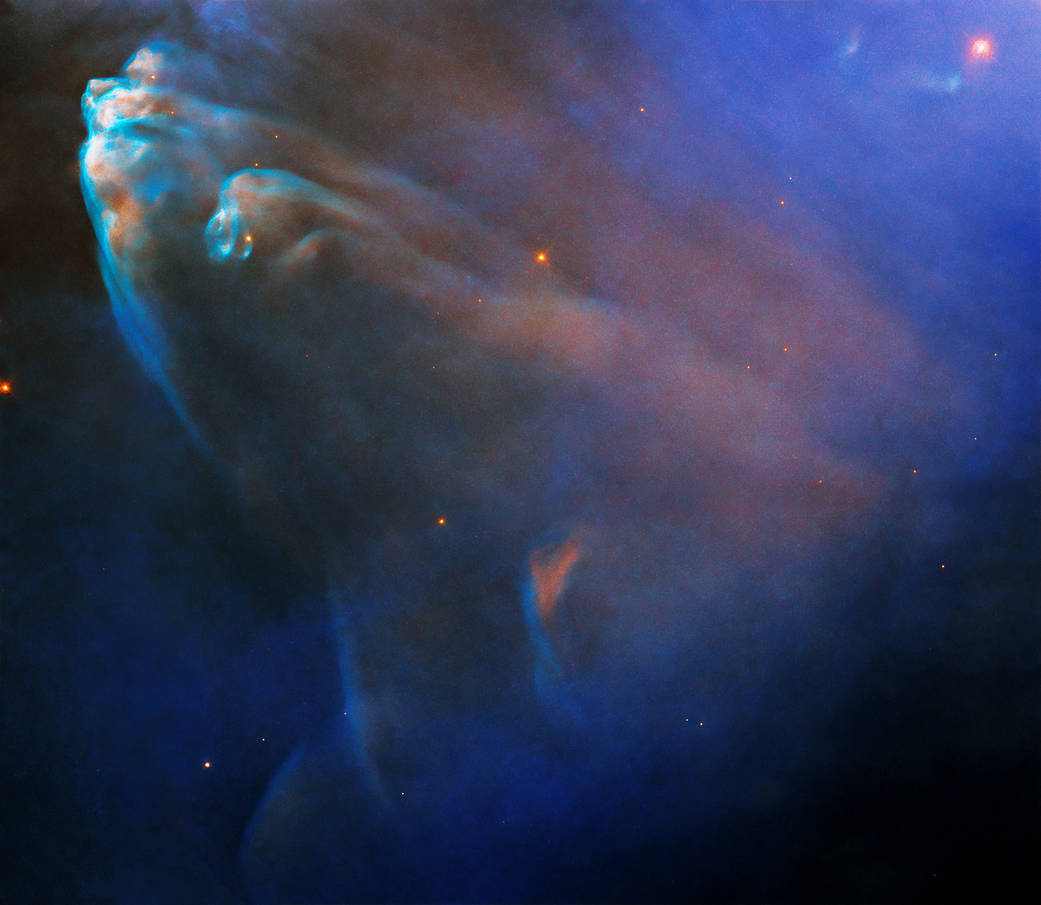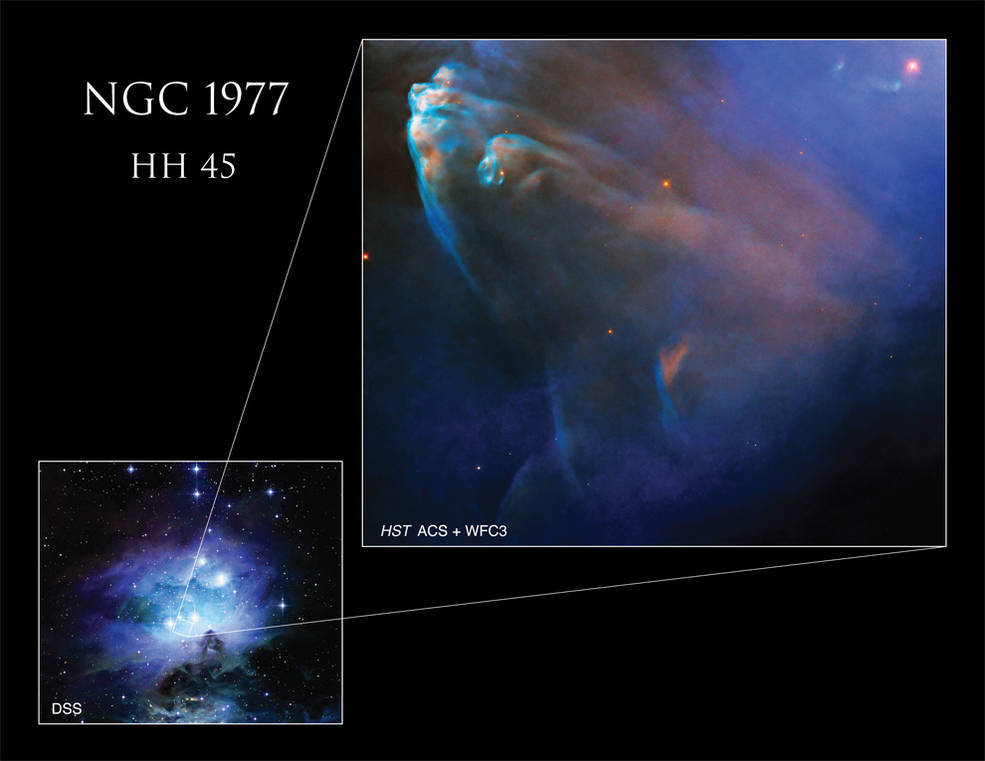Mounded, luminous clouds of gas and dust glow in this Hubble image of a Herbig-Haro object known as HH 45. Herbig-Haro objects are a rarely seen type of nebula that occurs when hot gas ejected by a newborn star collides with the gas and dust around it at hundreds of miles per second, creating bright shock waves. In this image, blue indicates ionized oxygen (O II) and purple shows ionized magnesium (Mg II). Researchers were particularly interested in these elements because they can be used to identify shocks and ionization fronts.
在这张哈勃拍摄的名为HH 45的赫比格-哈罗天体图像中,堆积的、发光的气体和尘埃云闪闪发光。赫比格-哈罗天体是一种罕见的星云,当新生恒星喷出的热气体以每秒数百英里的速度与周围的气体和尘埃碰撞,产生明亮的冲击波。在这张图片中,蓝色表示电离的氧(O II),紫色表示电离的镁(Mg II)。研究人员对这些元素特别感兴趣,因为它们可以用来识别冲击波和电离锋线。
This object is located in the nebula NGC 1977, which itself is part of a complex of three nebulae called The Running Man. NGC 1977 – like its companions NGC 1975 and NGC 1973 – is a reflection nebula, which means that it doesn’t emit light on its own, but reflects light from nearby stars, like a streetlight illuminating fog.
这个天体位于NGC 1977星云中,它本身是三个星云复合体的一部分,被称为 “奔跑者”。NGC 1977——和它的同伴NGC 1975和NGC 1973一样——是一个反射星云,这意味着它本身并不发光,而是反射附近恒星的光线,就像路灯照亮雾气一样。
Hubble observed this region to look for stellar jets and planet-forming disks around young stars, and examine how their environment affects the evolution of such disks.
哈勃观测这个区域是为了寻找年轻恒星周围的恒星喷流和行星形成盘,并研究它们的环境如何影响行星形成盘的演变。
Hubble imaged a small section of the Running Man Nebula, which lies close to the famed Orion Nebula and is a favorite target for amateur astronomers to observe and photograph.
Credits: NASA, ESA, J. Bally (University of Colorado at Boulder), and DSS; Processing: Gladys Kober (NASA/Catholic University of America)
哈勃拍摄了奔跑者星云的一小部分,它靠近著名的猎户座星云,是业余天文学家最喜欢观察和拍摄的目标。
影像来源:NASA, ESA, J. Bally (University of Colorado at Boulder), and DSS; Processing: Gladys Kober (NASA/Catholic University of America)
Main Image Credit: NASA, ESA, and J. Bally (University of Colorado at Boulder); Processing: Gladys Kober (NASA/Catholic University of America)
主图来源:NASA, ESA, and J. Bally (University of Colorado at Boulder); Processing: Gladys Kober (NASA/Catholic University of America)








